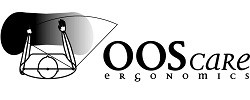Ergonomics is about matching equipment to the user and the task to the worker. To apply ergonomics we need to know about human capabilities, and, of equal importance, what the person is trying to achieve.
A fundamental issue in ergonomics is size. Humans come in a range of sizes. Not only are there those of us who are tall and short and thin or wide, there are those who have small hands, others with a long reach, etc.
When choosing equipment, the size range of that part of the person using the product needs to be assessed (for example, for a computer mouse hand size is important not the person’s height) and the more adjustable the product, the greater the benefit if it is to be used by different people.
RISKS FOR AN OFFICE WORKER
- Poor posture: hand, arms, neck, shoulders, spine; can lead to back pain, circulation problems and headaches
- Duration and variety of tasks: occupational overuse syndrome and musculoskeletal injury
- Glare and lighting: eye strain and headaches
- Working environment: noise, air quality and temperature.
EMPLOYERS' DUTY OF CARE
Employers have a general duty of care to their employees to provide a safe and healthy workplace. In the office work environment the general duty of care includes:
- That appropriate equipment and environment are provided
- That reasonable time is allowed for tasks
- Ensuring employees know how to use and adjust the equipment (including their desks, chairs and monitor set up) e.g. providing instruction and/or training
- Supervision to ensure the equipment is being used
- Ensuring the system of work is appropriate and not detrimental to the employee’s health, safety or welfare.
WHAT IS ESSENTIAL FOR AN OFFICE WORKER?
- Frequent changes in position, including regular breaks from sitting.
- Adjustable and supportive chair
- Preferably an adjustable desk/workstation or a fixed height desk/workstation with the availability of a height adjustable footrest
- Appropriate, well maintained equipment suitable for the tasks undertaken - this may require expert advice
- Sufficient work surface to carry out their tasks.
- Sufficient area to both enter and move about their work area easily, and allow frequent changes in posture
- Storage for their work requirements and personal items
- An environment that is at a satisfactory temperature for the work, appropriately lit, and has reasonable air quality.
